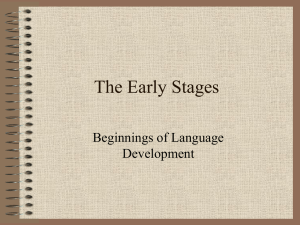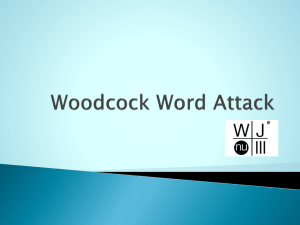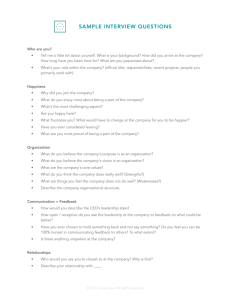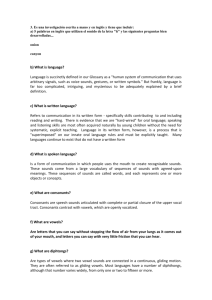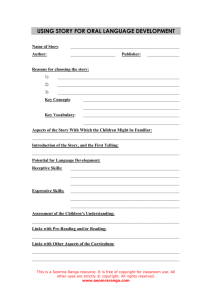What a Child Knows - Super Duper Publications
advertisement
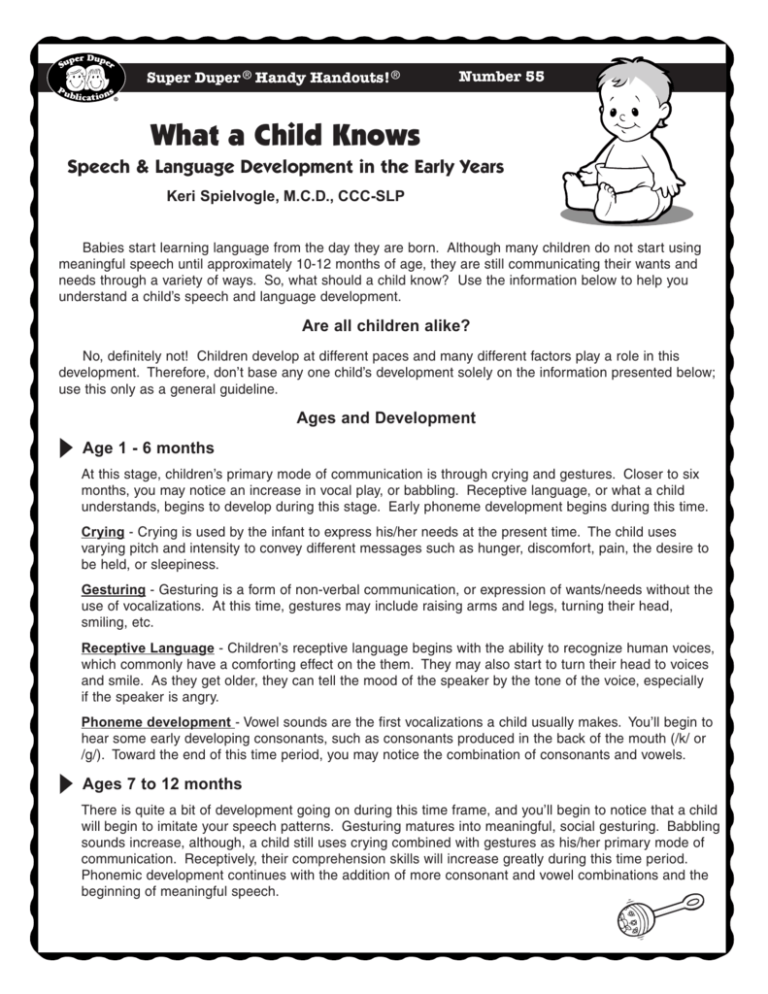
Super Duper ® Handy Handouts! ® Number 55 What a Child Knows Speech & Language Development in the Early Years Keri Spielvogle, M.C.D., CCC-SLP Babies start learning language from the day they are born. Although many children do not start using meaningful speech until approximately 10-12 months of age, they are still communicating their wants and needs through a variety of ways. So, what should a child know? Use the information below to help you understand a child’s speech and language development. Are all children alike? No, definitely not! Children develop at different paces and many different factors play a role in this development. Therefore, don’t base any one child’s development solely on the information presented below; use this only as a general guideline. Ages and Development Age 1 - 6 months At this stage, children’s primary mode of communication is through crying and gestures. Closer to six months, you may notice an increase in vocal play, or babbling. Receptive language, or what a child understands, begins to develop during this stage. Early phoneme development begins during this time. Crying - Crying is used by the infant to express his/her needs at the present time. The child uses varying pitch and intensity to convey different messages such as hunger, discomfort, pain, the desire to be held, or sleepiness. Gesturing - Gesturing is a form of non-verbal communication, or expression of wants/needs without the use of vocalizations. At this time, gestures may include raising arms and legs, turning their head, smiling, etc. Receptive Language - Children’s receptive language begins with the ability to recognize human voices, which commonly have a comforting effect on the them. They may also start to turn their head to voices and smile. As they get older, they can tell the mood of the speaker by the tone of the voice, especially if the speaker is angry. Phoneme development - Vowel sounds are the first vocalizations a child usually makes. You’ll begin to hear some early developing consonants, such as consonants produced in the back of the mouth (/k/ or /g/). Toward the end of this time period, you may notice the combination of consonants and vowels. Ages 7 to 12 months There is quite a bit of development going on during this time frame, and you’ll begin to notice that a child will begin to imitate your speech patterns. Gesturing matures into meaningful, social gesturing. Babbling sounds increase, although, a child still uses crying combined with gestures as his/her primary mode of communication. Receptively, their comprehension skills will increase greatly during this time period. Phonemic development continues with the addition of more consonant and vowel combinations and the beginning of meaningful speech. Babbling - As your child reaches the end of this stage, babbling becomes more like meaningful speech. Children will begin to use word-like utterances to name objects. If used consistently, these utterances become meaningful speech. Receptive Language - Children will begin to understand that objects have names and will look at or gesture towards a named object. Although a child’s receptive language is increasing, he/she will still rely heavily on non-verbal cues from the speaker to fully understand. Toward the end of this stage, the child will be able to follow simple commands and will recognize his/her name and some body parts such as eyes, nose, mouth, etc. Phonemic Development - Along with the /k/ and /g/ sounds, you’ll begin to hear more sounds produced in the front of the mouth (/b/, /p/, /m/, /w/) combined with vowel sounds. Children will also vocal play, or combine consonants and vowels in a repetitive nature. Ages 13 to 36 months During this stage, children make great strides in language development. Babbling becomes meaningful words and phoneme development continues. Receptively, their skills continue to expand in great strides. Babbling/Meaningful Speech - Early in this stage, the child mixes meaningful words with jargon. Toward the end of the stage, however, a child’s vocabulary expands to include over 200 words. Children should be able to name common objects and combine 2-3 words into phrases. Receptive Language - Early in this stage, a child should understand and identify common objects upon request. This skill expands to include objects that are not currently in a child’s sight. Towards the end of this stage, a child can follow two-step commands. A child’s receptive language continues to grow rapidly, with expressive language developing at a slower pace until approximately 3-4 years of age. Phonemic Development - Like receptive language, phoneme development continues to grow rapidly during this stage. You’ll begin to hear the phonemes /n/, /t/, /d/, /h/, /k/, and /g/. Speech patterns may include the substitution of /w/ for /r/. This is normal and occurs because the child hasn’t been able to develop the /r/. Use this information as a general guideline only. Consult with your child’s speech therapist, teacher, or pediatrician if you suspect your child’s speech or language is not developing normally. Be an observant and loving parent, but keep in mind children develop at different speeds. Above all, enjoy this time with your child. Dyer, L. Little language: speech and language enhancement strategies (2001). Call Toll Free 1-800-277-8737 Fax Toll Free 1-800-978-7379 Online! www.superduperinc.com

